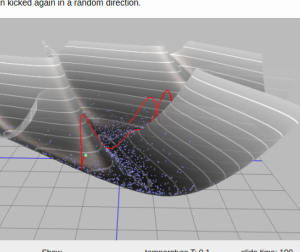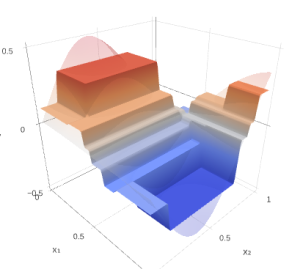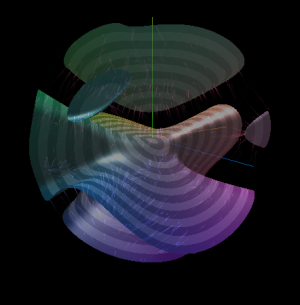Using fortran from python
I like numpy (a core library for numerical computations in python), but in some very-very rare cases I need to achieve the maximal possible speed of number crunching.
There is a number of options you can use (see my post with benchmarking of number crunchers). So the option I choose is to use fortran.
Several reasons for such inobvious choice:
- speed (fortran usually gives slightly faster programs then C++)
- vector operations, which shorten your code (i.e. to add two matrices and save it to third, you can write
x(:, :) = y(:, :) + z(:, :)) - simple memory management
However, there are demerits that I discovered during experimenting:
- 1-based indexing parameters.
In fortran enumeration goes from 1 by default, but you can change it for all arrays, for the exception of assumed-shape parameters (and assumed-shape parameters are the most convenient way to interface with python) - pointers cannot be set to allocatable arrays, which seems to be artificial limitation
- slow casting - you cannot convert int64[:] to int8[:], because such operations are forbidden. (however, you can use transfer, but this is copying, not casting)
- lack of support for unsigned integers (and ways to substitute it, for instance,
zextfunctions) - non-trivial vector operations frequently give worse results compared to explicitly written loops.
So just in case: fortran isn’t friendly to different bit hacks.
Fortran magic
The most convenient way to experiment with python + fortran is fortran magic for ipython.
Installation is trivial: pip install -U fortran-magic
Create a new ipython notebook for experiments, now you can use fortran cells to define new functions, which will be automatically wrapped to numpy
In[1]: %load_ext fortranmagic # activating magic
In[2]: %%fortran
subroutine my_function(x, y, z)
real, intent(in) :: x(:), y(:)
real, intent(out) :: z(size(x))
! using vector operations
z(:) = sin(x(:) + y(:))
end subroutine
In[3]: # Now we can use this function
import numpy
x = numpy.random.normal(size=100)
y = numpy.random.normal(size=100)
z = my_function(x, y)
Result of computations z is numpy array.
This code doesn’t look like those old fortran77 programs with lots of ‘C’ and strange indentations,
because it uses fortran 90 standard, which is rather permissive.
To debug compilation, use -vvv options, this will print all compiler warnings and output:
In[4]: %%fortran -vvv
subroutine my_function(x, y, z)
real, intent(in) :: x(:), y(:)
real, intent(out) :: z(size(x))
! using vector operations
z(:) = sin(x(:) + y(:))
end subroutine
If you want to use openmp with fortran in python, this is how you can do it with gfortan:
In[5]: %%fortran -vvv --f90flags='-fopenmp' --extra='-lgomp'
subroutine my_function(x, y, z)
use omp_lib
real, intent(in) :: x(:), y(:)
real, intent(out) :: z(size(x))
! your code
end subroutine
Also useful:
--opt='-O3'for O3 optimization level- Fortran 90 best practices
F2py
Fortran magic uses f2py under the hood. f2py currently is a part of numpy installation.
That’s the function you need to get openmp + fortan 90 working with python:
def compile_fortran(source, module_name, extra_args=''):
import os
import tempfile
import sys
import numpy.f2py # just to check it presents
from numpy.distutils.exec_command import exec_command
folder = os.path.dirname(os.path.realpath(__file__))
with tempfile.NamedTemporaryFile(suffix='.f90') as f:
f.write(source)
f.flush()
args = ' -c -m {} {} {}'.format(module_name, f.name, extra_args)
command = 'cd "{}" && "{}" -c "import numpy.f2py as f2py;f2py.main()" {}'.format(folder, sys.executable, args)
status, output = exec_command(command)
return status, output, command
Now, the usage is:
fortran_source = '''
subroutine my_function(x, y, z)
real, intent(in) :: x(:), y(:)
real, intent(out) :: z(size(x))
! using vector operations
z(:) = sin(x(:) + y(:))
end subroutine
'''
status, output, command = compile_fortran(fortran_source, modulename='mymodule',
extra_args="--f90flags='-fopenmp' -lgomp")
Now we can use the compiled module:
from mymodule import my_function
 Gradient boosting
Gradient boosting  Hamiltonian MC
Hamiltonian MC  Gradient boosting
Gradient boosting  Reconstructing pictures
Reconstructing pictures  Neural Networks
Neural Networks